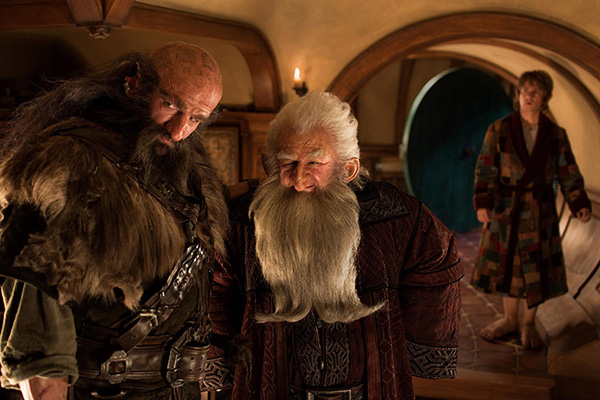
What’s up with Sean Penn’s nose in “Gangster Squad” or Bradley Cooper’s hair in “American Hustle?” How does Bruce Willis barely look beaten up after jumping through windows in “A Good Day to Die Hard?”
The answer is makeup, an art that never receives enough credit in films. Most viewers do not realize how makeup can enhance or worsen the film experience. In the past year alone, films have relied more heavily on excessive makeup jobs than ever. But in films like “Les Misérables,” last year’s Oscar winner for makeup, the extravagance of the makeup does not make it less convincing.
The list of biopics that have used makeup for dramatic effect in the past year is long, although the quality of makeup has not always been successful. “Lee Daniels’ The Butler” received criticism for the lackluster makeup on the actors playing American presidents. Idris Elba spent five hours in the makeup chair every day while he was made to look like Nelson Mandela, and when watching the trailer of “Mandela: Long Walk to Freedom,” the audience recognizes the benefits of that decision. However, the most commendable job this year should be credited to post-car crash Niki Lauda (Chris Hemsworth) in “Rush,” where the burned skin on his face is frighteningly convincing.
Science fiction and fantasy films of the past year have also heavily relied on makeup. Peter Jackson boasted on a “Hobbit” video blog about a team devoted to digitally adding facial hair to the dwarves. And with the popularity of “The Walking Dead,” zombie makeup has become important to movies such as “Warm Bodies” and “World War Z.”
In 2013 alone, it’s easy to see why nominating three films for the Best Makeup category at the Oscars is difficult. Makeup can often play an important role in movies, and even when the excessive makeup is obvious, it still serves a purpose. After all, Alien (James Franco) from “Spring Breakers” wouldn’t be nearly as convincing without tattoos and gold teeth.
Zack Grullon is a staff writer. Email him at [email protected].























































































































































